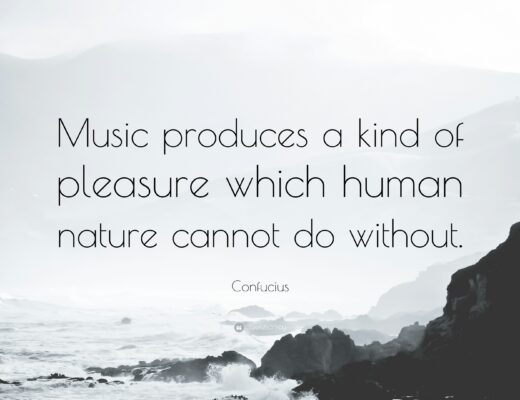It can be tempting to clutch at optimistic straws when there are signs the music industry isn’t following a depressing trajectory of decline, such as the resurgence in the sales of physical media, with CD & vinyl records charting impressive gains in the UK.
This revival, as recently indicated by the Entertainment Retailers Association (ERA), is a testament to a shifting consumer preference towards tangible music formats. However, is this trend a harbinger of a more prosperous era for the music industry, or merely a nostalgic blip in the digital-dominated landscape?
This article will examine the nuances of the freshly reported statistics and explore what they truly signify for the industry’s future, bearing in mind that for the music industry to be sustainable, emerging independent artists need a slice of the sonic pie.
The Resurgence of CD & Vinyl
It is undeniable that the latest figures from ERA paint a promising picture for physical music formats, with CD & vinyl sales experiencing a notable uplift. The first half of 2024 saw vinyl sales amassing £86.3 million, a 13.5% increase, while CD sales brought in £57.9 million, marking a 3.2% rise.
However, if you take the figures, which suggest a revitalisation of interest in physical media with a pinch of salt, you will see that the influx in sales is driven by more than a consumer shift towards more tactile forms of music consumption.
One of the main drivers of the increase in CD & vinyl sales was Taylor Swift releasing 19 physical variants of her latest album, The Tortured Poets Department, which included six vinyl, nine CD and four cassette variants. Since the album went on sale in April, Swift has managed to shift 2.47 million physical copies of her album. Undoubtedly, many of Swift’s diehard fans purchased as many physical copies as they could afford/get their hands on. This album release strategy, which inflates album sales, has come under fire recently, with several industry figures, including Billie Eilish commenting on how insidious the trend is.
“I find it really frustrating as somebody who goes out of my way to be sustainable and do the best that I can and try to involve everybody in my team in being sustainable – and then it’s some of the biggest artists in the world making 40 different vinyl packages that have a different unique thing just to get you to keep buying more.”
Another key driver of physical sales was Record Store Day, which was primed to be the biggest RSD event to date and anticipated to inject £10 million into independent record shops. However, just because RSD favours independent record stores, independent artists rarely get a look in, and once again Swiftonomics played their part in the success of RSD 2024 with a limited edition copy of her album being the reason that many music fans hit record stores in their droves, simply to procure a copy of the album with the note “Happy Record Store Day!”
The Illusion of a Booming Industry
While the uptick in physical sales might suggest a thriving industry, it’s essential to tread cautiously with your optimism. The broader perspective reveals that this rise occurs against a backdrop of overall decline since the industry’s peak in 1999.
Moreover, despite the growth in physical sales, the industry is still heavily skewed towards streaming, which accounted for 84% of UK music retail revenues in 2023; as it is almost impossible to earn a living wage from streaming royalties, the music industry is still very much a hostile economic environment for independent and grassroots artists.
Therefore, the disparity between physical sales and streams which sees many music fans foregoing physical releases for the convenience and low cost of streaming services, suggests that the increase in physical sales may not signify a comprehensive industry recovery but rather a niche revival fuelled by specific market drivers, such as those outlined above.
The Nostalgic Overhang
It is also crucial to note how the nostalgia factor significantly contributes to the resurgence of vinyl and CDs. Older tracks and classic albums continue to dominate sales, potentially stifling new music’s market penetration and influence. This trend towards nostalgia can be a double-edged sword: it bolsters sales figures while possibly hindering the diversity and evolution of music offerings. Thus, while there’s an aural appetite for old favourites, it’s imperative to consider what this means for new artists and music innovation.
Independent Artists and the Trickle-Down Effect
Despite the rosy picture painted by raw sales figures, the reality for independent artists remains markedly different. The boon seen by flagship artists and big-ticket events like those associated with Taylor Swift does not necessarily trickle down to smaller, independent artists who often remain on the fringes of these economic uplifts. This scenario raises questions about the equity and distribution of wealth within the industry, suggesting a need for more inclusive growth strategies that support a broader array of artists. We have already written extensively about the dire state of the talent pipeline in the UK; however, there seems to be no clear course for recourse that will take indie music back to its 90s glory.
Conclusion
As nostalgia and globally revered artists hold the monopoly of the music industry and project an illusion of growth into the sonic economy, it is crucial to consider the industry’s underlying challenges, instead of taking the figures as a reflection of a universally prosperous landscape for all artists involved. As we look forward, it is crucial for stakeholders to foster a more sustainable and inclusive environment that supports both the old and new facets of music, ensuring that this resurgence is not just a fleeting echo of the past, but a stepping stone to a robust and equitable industry.
Article by Amelia Vandergast




No Comments